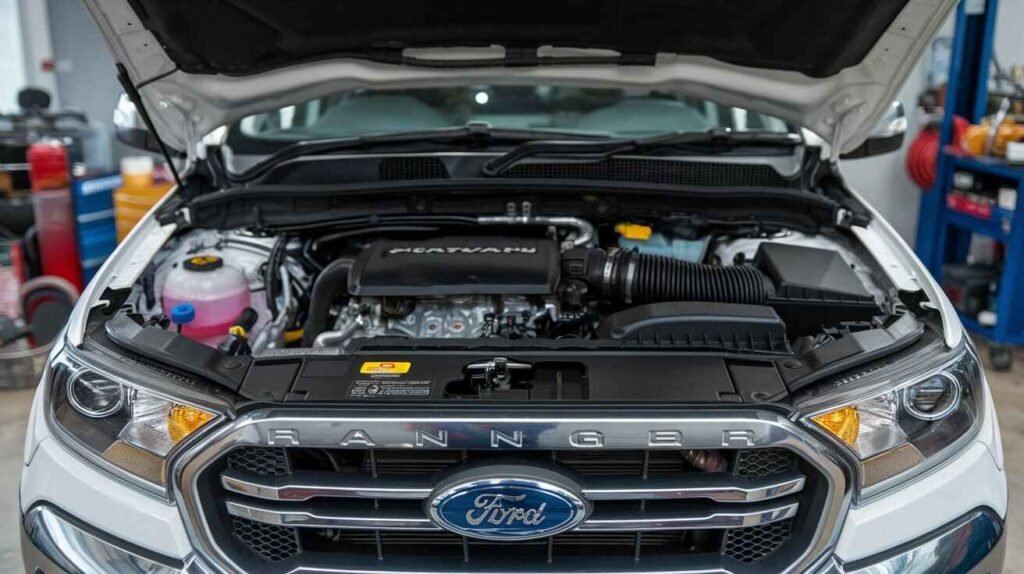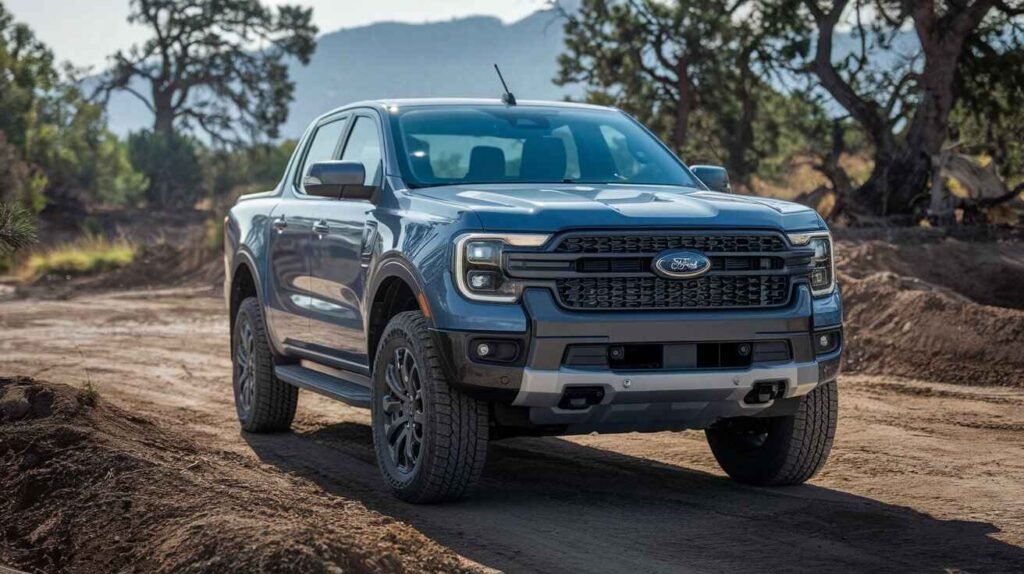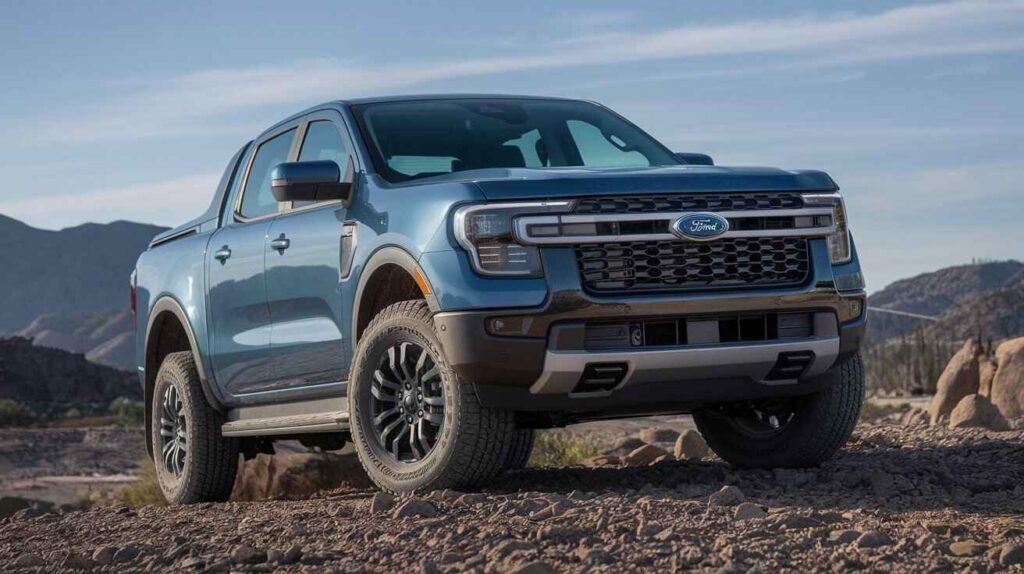Introduction
The Ford Ranger 2.8 motor has received recognition as one of the most reliable and excessive-acting engines in the midsize pickup truck phase. Designed to deliver strong power and efficiency, this Motor is suitable for an extensive range of drivers. Whether you’re an off-street adventurer conquering rugged terrains, a contractor hauling heavy loads, or a metropolis commuter, this engine offers electricity, reliability, and practicality.
This article examines the Ford Ranger 2.8 motor, covering its layout, performance, specs, gasoline economy, and renovation. We’ll also offer hints to maximize its lifespan and increase its overall performance. By the end of this manual, you’ll be equipped with all the information needed to keep your engine running at its best.
What Makes the Ford Ranger 2.8 Motor Special?
The Ford Ranger 2.8 motor sticks out for its ability to deal with many tasks readily, imparting a perfect combination of electricity, efficiency, and sturdiness. Here’s what units it apart:
Turbocharged Performance
At the heart of the two 8L motors is its Variable Geometry Turbocharger (VGT). Unlike conventional turbochargers, the VGT adapts to engine speed, making sure regular strength transport in any respect RPM ranges. This means:
- Reduced Turbo Lag: The faster response nearly immediately, disposing of energy output delays.
- Smooth Acceleration: The engine delivers seamless electricity whether you’re overtaking on the motorway or climbing a steep incline.
- Fuel Efficiency: Optimized airflow improves combustion efficiency, contributing to decreased gas intake.
Built for Extreme Conditions
The Ford Ranger 2. Eight motors are engineered for reliability in hard environments. Its strong construct and advanced cooling structures allow it to carry out effectively in:
- High Temperatures: Robust cooling mechanisms prevent overheating for long drives or heavy workloads.
- Rough Terrains: The Motor’s durable design makes it suitable for vibrations and shocks from off-avenue adventures.
- Heavy Loads: The excessive torque output ensures that towing huge trailers or devices doesn’t stress the engine.
To discover more insightful articles and stay updated on the latest trends, visit the The Daily Trials for a comprehensive range of content.
Versatility and Adaptability
This engine caters to diverse riding needs. Its balance of strength and gasoline economy makes it similarly suitable for:
- Urban Driving: Compact length and gasoline-green overall performance for metropolis commutes.
- Off-Roading: Exceptional torque and traction control for navigating hard terrains.
- Towing and Hauling: High towing potential for professional or recreational functions.
Ford Ranger 2.8 Motor Specifications
To appreciate this engine’s capabilities, let’s break down its technical specifications in detail:
| Feature | Specification |
| Engine Type | 2.8L Inline 4-Cylinder Turbo Diesel |
| Horsepower | 201 HP (approximately 150 kW) |
| Torque | 500 Nm (369 lb-ft) |
| Turbocharger | Variable Geometry Turbocharger (VGT) |
| Transmission Options | 6-speed manual or 10-speed automatic |
| Fuel Type | Diesel |
| Towing Capacity | Up to 3,500 kg (7,716 lbs) |
| Fuel Economy (City) | ~8.5-9.5 L/100 km |
| Fuel Economy (Highway) | ~7.5-8.5 L/100 km |
Performance and Real-world Benefits
Power and Torque Delivery
With 201 HP and 500 Nm of torque, the Ford Ranger 2.8 motor offers first-rate pulling electricity, particularly at low speeds. This makes it perfect for responsibilities requiring excessive torque, together with:
- Towing Heavy Loads: Whether it’s trailers, equipment, or boats, this Motor can tow up to 3,500 kg with ease.
- Off-Road Maneuvering: The excessive torque guarantees balance and traction on steep inclines, dust, and uneven trails.
The VGT further enhances overall performance by turning in constant electricity, ensuring that the engine always feels responsive and successful.
Off-Road Performance
For off-road lovers, the Ford Ranger 2.8 Motor is a dependable accomplice. Key capabilities include:
- Exceptional Torque at Low RPM: Ideal for mountaineering steep slopes and navigating boundaries.
- Advanced Traction Control: Enhances grip on slippery surfaces like dust, sand, or snow.
- Durable Components: Built to endure shocks, vibrations, and vicious situations encountered in off-street riding.

Fuel Efficiency and Economy
Balancing Power with Efficiency
Despite its electricity, the Ford Ranger 2.8 motor gives stunning fuel performance. On average:
- City Driving: Consumes round eight.Five to nine.Five liters according to a hundred km.
- Highway Driving: Efficiency improves, averaging 7.5 to eight.Five liters per 100 km.
This stability ensures you can experience each overall performance and affordability, making it a price-effective preference for long-term ownership.
Maximizing Fuel Economy
To get the most out of your Ford Ranger 2. 8 motors comply with these pointers:
- Maintain a Steady Speed: Sudden acceleration and braking increase fuel intake. Opt for sluggish changes in velocity.
- Use High-Quality Diesel: Premium diesel ensures cleaner combustion, prolonging engine life and improving fuel efficiency.
- Check Tire Pressure Regularly: Underinflated tires grow rolling resistance, leading to better gasoline consumption.
- Avoid Overloading: Carrying immoderate weight stresses the engine, reducing performance.
Reliability and Longevity of the Ford Ranger 2.8 Motor
The Ford Ranger 2.8 motor is celebrated for its durability and lengthy lifespan, making it a dependable choice for informal drivers and heavy-obligation users. Known for its sturdy layout and capacity to withstand hard situations, this engine is built to last. With everyday upkeep and proper care, it could, without problems, surpass 300,000 km, with a few engines even crossing the 400,000 km mark.
This durability is a testament to Ford’s engineering excellence and the eye for detail in the Motor’s creation. However, achieving such mileage depends on how nicely the engine is maintained, the amount of gas used, and riding habits.
How Reliable is the Ford Ranger 2.8 Motor?
The 2.8 motor is quite reliable, making it a preferred choice for proprietors looking for peace of mind. Its turbocharged diesel design ensures strength and efficiency, while its durable components make it appropriate for harsh conditions, whether you’re using it in intense heat, bloodless, or rugged terrain.
Several elements contribute to the Motor’s reliability:
- High-Quality Materials: The engine block, pistons, and different additives are made from durable substances, minimizing put-on and tear over the years.
- Advanced Technology: Features like the Variable Geometry Turbocharger (VGT) optimize overall performance while reducing engine pressure.
- Proven Track Record: Real-world usage has shown this Motor to perform reliably throughout distinct environments and packages.
However, even the most reliable engines might encounter problems. Knowing those capacity problems and their answers is vital for long-term overall performance.
Common Issues and Their Solutions
While the Ford Ranger 2.8 motor is considered reliable, like every mechanical system, it can face certain problems over time. Below are the common issues and actionable solutions:
Turbocharger Wear
- Problem: Overextended durations, the turbocharger can wear out, leading to decreased engine performance and slower acceleration.
- Solution:
- Use top-notch synthetic oil to ensure the rapid stays nicely lubricated.
- Schedule ordinary turbo inspections to become aware of early signs and symptoms of damage.
- Avoid common hard accelerations, which can pressure the turbocharger.
Fuel Injector Problems
- Problem: Contaminated or low-high-quality diesel can clog the gas injectors, causing misfires, reduced gas performance, and choppy engine overall performance.
- Solution:
- Use top-class diesel to reduce the probability of clogging.
- Add a gas gadget cleaner periodically to dispose of deposits.
- Have injectors professionally cleaned or replaced as needed at some point of servicing.
Oil Leaks
- Problem: Seals and gaskets may be put out over time, causing oil to leak. This can cause low oil degrees, which may additionally harm the engine.
- Solution:
- Perform ordinary oil degree checks to detect leaks early.
- Replace tired seals and gaskets throughout recurring maintenance.
- Address any oil stains or drips immediately to save you from similar damage.
To discover more insightful articles and stay updated on the latest trends, visit the The Daily Trials for a comprehensive range of content.

Maintenance Tips for Optimal Performance
Proper protection is the key to ensuring that your Ford Ranger 2. 8 motors have performed reliably for years. Below are designated guidelines for keeping your engine in a height situation:
Essential Maintenance Tasks
- Regular Oil Changes
- Change the engine oil every 10,000–15,000 km or as specific inside the owner’s guide.
- Use the simplest first-rate artificial diesel oil to guard engine additives and ensure easy operation.
- Filter Replacements
- Replace the air filter every 15,000–20,000 km to preserve premiere airflow.
- Change the fuel clear out annually or as recommended to save impurities from getting into the engine.
- Replace the oil clear out during every oil trade to maintain the smoothness.
- Inspect the Cooling System
- Regularly test coolant levels to keep away from overheating.
- Flush and replace the coolant every 2–3 years to maintain its effectiveness.
- Check Belts and Hoses
- Inspect the engine belts and hoses for cracks, fraying, or wear at some point in the ordinary carrier.
- Replace worn belts right away to prevent unexpected breakdowns.
- Monitor Battery Health
- Ensure the battery terminals are smooth and connections are secure.
- Test battery voltage periodically to verify it’s functioning nicely.
Professional vs. DIY Maintenance
While a few preservation duties may be handled at home, others require expert expertise:
DIY Maintenance
- Cleaning or changing the air clear out.
- Checking and topping up fluids like oil, coolant, and brake fluid.
- Monitoring tire stress and tread depth.
Professional Maintenance
- Turbocharger Inspections: Requires specialized equipment and knowledge.
- Fuel Injector Cleaning: Involves disposing of and servicing injectors.
- ECU Diagnostics: Professionals can pick out and remedy complex electronic issues.
Performance Upgrades and Enhancements
Several famous enhancements are available for those seeking to improve the Ford Ranger 2.8 motor’s overall performance. These can improve energy, efficiency, and normal riding enjoyment.
Popular Upgrades
- ECU Remapping
- Reprograms the engine control unit (ECU) to optimize gas shipping, faster timing, and electricity output.
- It can grow horsepower and torque by as much as 15–20%, even improving gas performance.
- Upgraded Intercoolers
- Larger or extra green intercoolers lessen air temperatures, allowing for sustained high overall performance.
- Performance Exhaust Systems
- It enhances airflow and reduces pressure, improving each electricity and throttle reaction.
- It can also provide a more competitive engine sound.
Considerations Before Modifying
While upgrades can enhance overall performance, they’ll additionally:
- Void the vehicle’s assurance if not performed successfully.
- It affects long-term reliability if additives aren’t well-matched or improperly mounted.
- It requires an expert mechanic to provide certain protection and the greatest overall performance.
Always consult an expert before making mission modifications to ensure the improvements meet your desires and observe nearby regulations.
Conclusion
The Ford Ranger 2.8 Motor is a reliable and powerful engine, perfect for various uses, from off-roading to towing heavy loads. Its combination of performance and gas performance ensures long-term cost and decreased operating costs, making it a top preference for both everyday drivers and professionals.
Regular renovation is key to maximizing the engine’s lifespan. Simple tasks like oil adjustments, air clear-out replacements, and coolant checks can easily keep the Motor going for walks for loads of kilometers, preventing costly maintenance inside the Destiny.
For those seeking more desirable overall performance, improvements such as ECU remapping or stepped-forward intercoolers can also raise strength and efficiency. However, it’s vital to consult experts to ensure any adjustments are safe and compatible with the automobile.
Also Read: Peruvian Apple Cactus: Grow, Care & Harvest This Powerful Superfruit!
.





